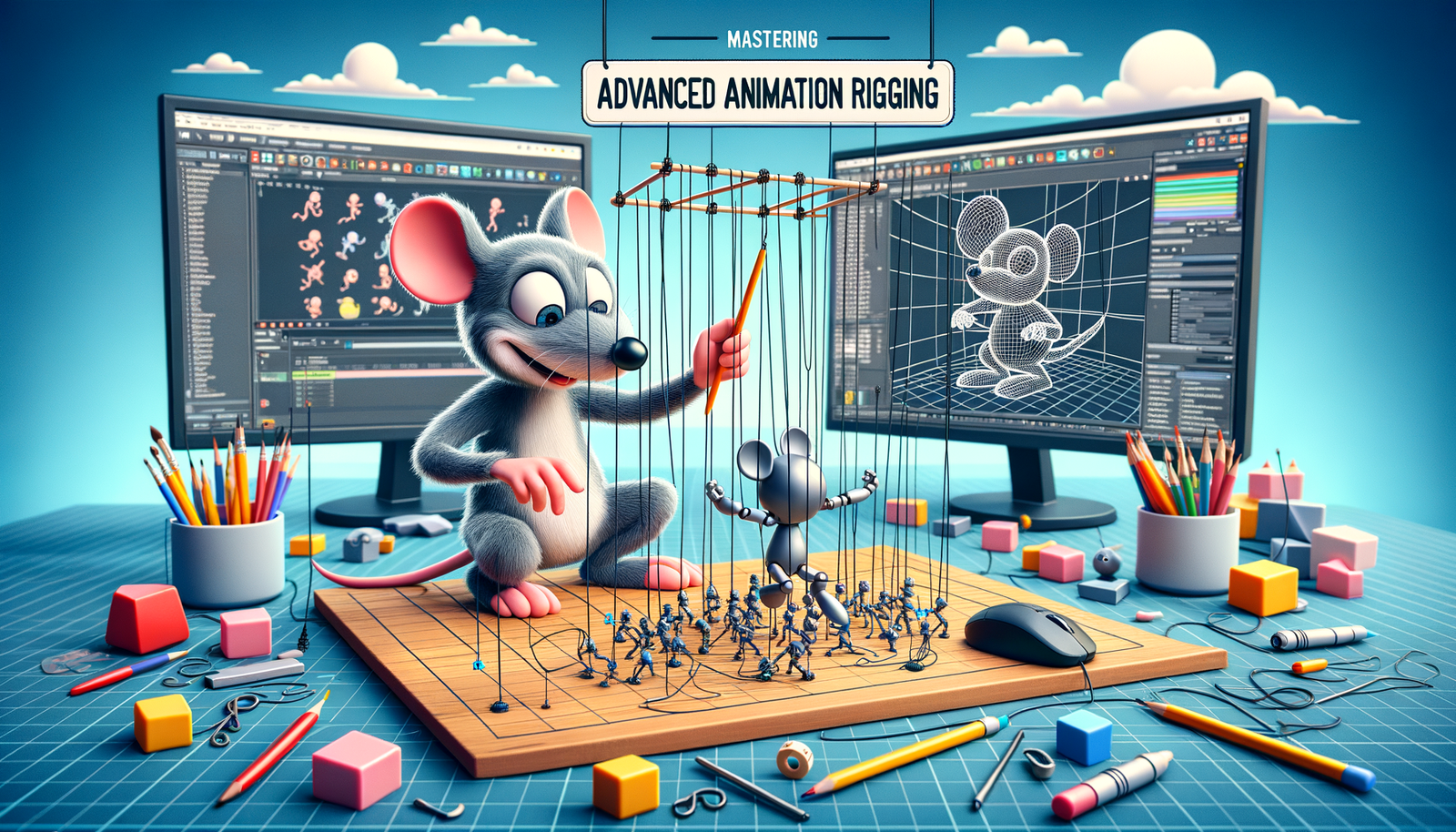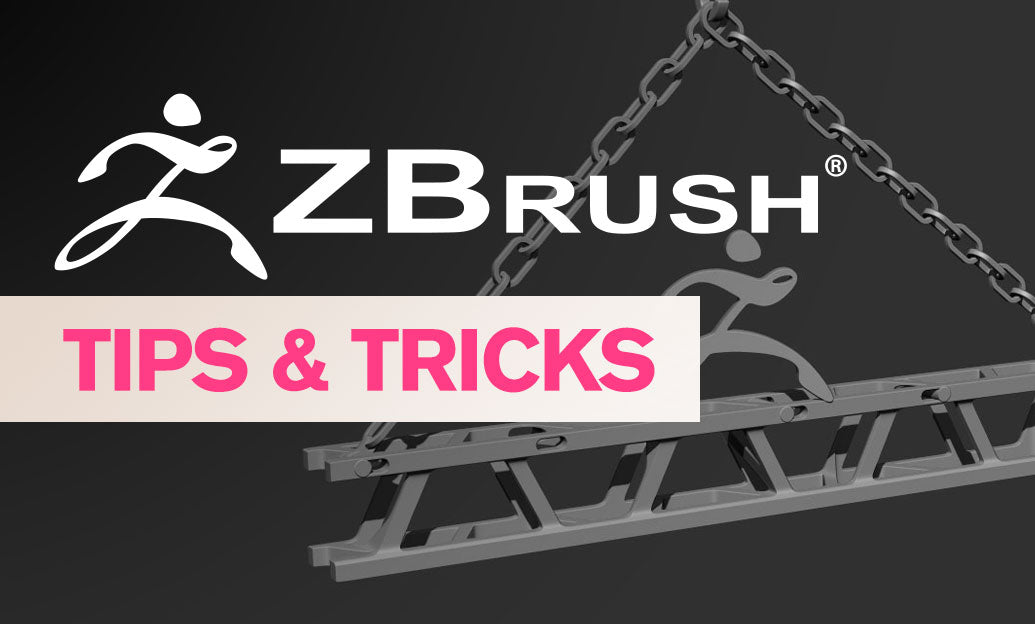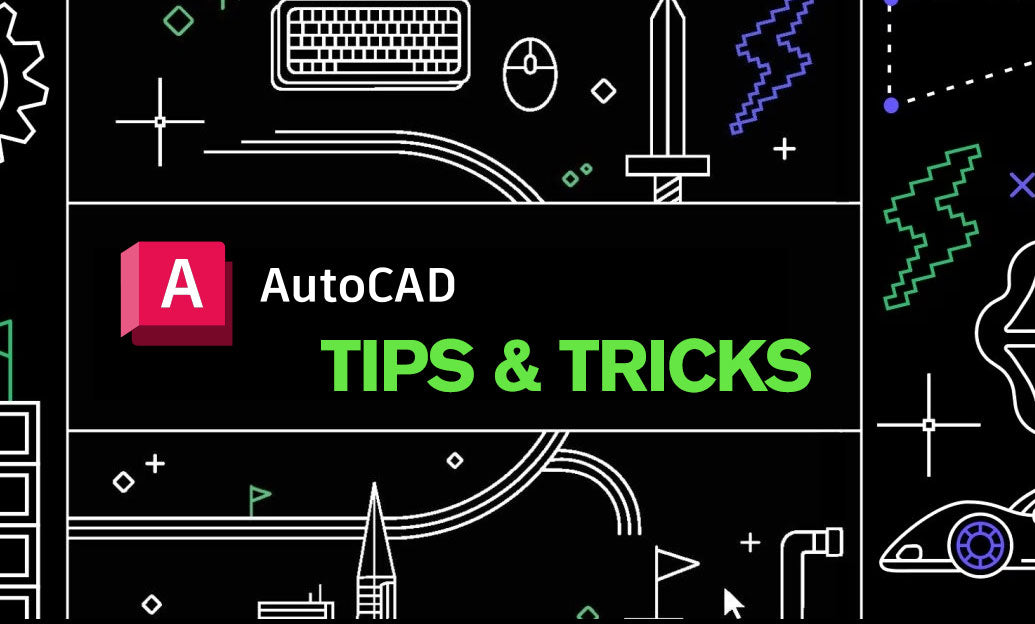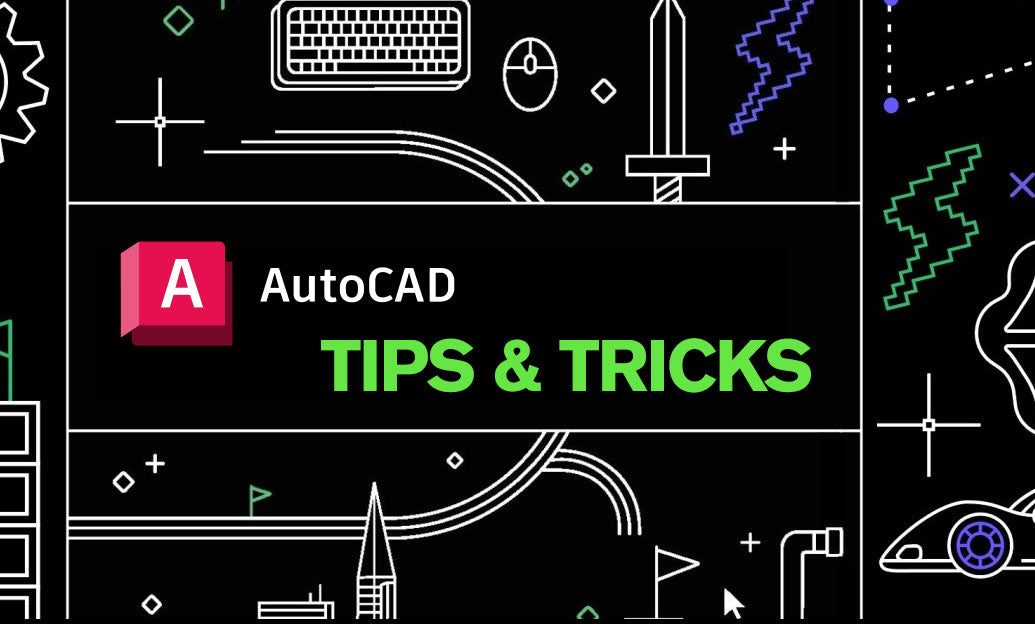Your Cart is Empty
Customer Testimonials
-
"Great customer service. The folks at Novedge were super helpful in navigating a somewhat complicated order including software upgrades and serial numbers in various stages of inactivity. They were friendly and helpful throughout the process.."
Ruben Ruckmark
"Quick & very helpful. We have been using Novedge for years and are very happy with their quick service when we need to make a purchase and excellent support resolving any issues."
Will Woodson
"Scott is the best. He reminds me about subscriptions dates, guides me in the correct direction for updates. He always responds promptly to me. He is literally the reason I continue to work with Novedge and will do so in the future."
Edward Mchugh
"Calvin Lok is “the man”. After my purchase of Sketchup 2021, he called me and provided step-by-step instructions to ease me through difficulties I was having with the setup of my new software."
Mike Borzage
Mastering Advanced Animation Rigging in Modern 3D Design Software
January 03, 2025 8 min read


Introduction to Advanced Animation Rigging in 3D Design Tools
Animation rigging is a fundamental process in the realm of 3D design that involves creating an underlying skeletal structure for digital models. This skeleton, composed of bones and joints, allows designers and animators to manipulate and control the movement of characters or objects within a virtual environment. The significance of rigging cannot be overstated; it serves as the bridge between static models and dynamic animations, enabling the transformation of lifeless meshes into expressive, moving entities. Without rigging, even the most intricately designed models would remain static and unresponsive, devoid of the lifelike qualities that captivate audiences in films, games, and simulations.
The evolution of rigging techniques has been a journey from painstaking manual processes to sophisticated automated systems. In the early days of 3D animation, rigging was a labor-intensive task that required animators to manually place each bone and define every joint's influence on the mesh. This method was not only time-consuming but also prone to errors and inconsistencies. However, advancements in technology have ushered in a new era of rigging methods, with tools that automate many aspects of the process. The transition from manual to automated rigging has significantly enhanced efficiency, allowing for more complex and realistic animations while reducing the potential for human error.
The purpose of advanced rigging features in modern 3D design tools is multifaceted. Primarily, they aim to enhance the realism and complexity of animations by providing animators with more control and flexibility over their models. Advanced rigging tools enable the creation of intricate movements that closely mimic real-world physics and biological mechanics. Additionally, these features streamline the animation workflow by automating routine tasks and simplifying complex procedures. This not only accelerates the production process but also empowers designers to focus more on the creative aspects of animation rather than the technicalities of rigging.
Procedural Rigging Systems
Procedural rigging systems represent a significant leap forward in the automation of the rigging process. These systems use algorithms and predefined rules to automatically generate rig structures based on the geometry of the model. By analyzing the model's shape and topology, procedural rigging tools can place bones, establish hierarchies, and set up control mechanisms without the need for manual intervention. This automated bone placement ensures that the rig is optimally configured for the specific model, which is particularly beneficial when dealing with complex or unconventional designs.
The benefits of procedural approaches in handling complex models are manifold. Firstly, they drastically reduce the time required to rig a model, allowing animators to meet tight production schedules without compromising on quality. Secondly, procedural rigging enhances consistency across different models, as the same set of rules can be applied uniformly, ensuring that all characters or objects in a project move cohesively. Lastly, it enables scalability in large projects where numerous models need to be rigged, as the automated system can efficiently handle bulk operations.
Inverse Kinematics (IK) Enhancements
Inverse Kinematics (IK) is a fundamental concept in animation that calculates the necessary joint angles to achieve a desired end-effector position, such as a hand or foot. Modern 3D design tools have introduced improved IK solvers that facilitate more natural and realistic movements. These enhancements in IK algorithms allow for smoother and more accurate motion control, enabling animators to create lifelike animations with ease. For instance, when animating a character reaching out to grab an object, the IK system ensures that the arm bends appropriately at the elbow and shoulder joints to achieve the desired hand position.
The applications of IK in character and mechanism animation are extensive. In character animation, IK is crucial for creating realistic limb movements, walking cycles, and interactions with the environment. It simplifies the process of animating complex joint hierarchies by allowing animators to focus on the position of the end effector rather than individually adjusting each joint. In mechanical animations, IK facilitates the simulation of robotic arms, machinery, and articulated structures where precise movement is essential. The use of IK enhances the animator’s ability to produce convincing movements that adhere to physical constraints and anatomical correctness.
Dynamic Deformation Controls
Dynamic deformation controls are advanced rigging features that allow for real-time manipulation of a mesh's shape during animation. These controls enable animators to simulate the subtle movements of muscles, skin, and other deformable elements, adding a layer of realism to the animation. Real-time mesh deformation capabilities mean that as a character moves, the mesh responds dynamically, showing bulging muscles, stretching skin, or compressing tissue, much like in real life. This level of detail is crucial for creating believable characters that resonate with audiences.
Tools for achieving lifelike muscle and skin movements have become more sophisticated, providing animators with intuitive interfaces to control deformable regions of the mesh. Techniques such as blend shapes, muscle systems, and skinning algorithms are employed to achieve these effects. For example, muscle systems simulate the contraction and relaxation of muscles beneath the skin, influencing the overlying mesh accordingly. The result is a character that not only moves realistically but also exhibits physical responses to those movements, enhancing the overall quality of the animation.
Integration with Physics Engines
The integration of advanced rigging with physics engines has revolutionized the way animators simulate interactions within a 3D environment. Physics engines calculate the effects of forces such as gravity, collision, and friction on objects, enabling the simulation of realistic movements and interactions. By integrating rigging systems with physics engines, animators can create scenes where characters and objects respond naturally to their environment. For instance, clothing and hair can sway with motion, and collisions between objects can result in appropriate deformations and reactions.
Enhancing rigging with physics-based animations allows for the simulation of complex phenomena without the need for manual keyframing of every movement. Animators can define physical properties like mass and stiffness, and the physics engine computes the resultant motions. This approach not only saves time but also ensures that the animations adhere to the laws of physics, resulting in more believable and engaging content. The ability to simulate realistic interactions and collisions is essential in fields such as gaming and virtual reality, where immersion and realism are critical.
Seamless Workflow Integration
Integration of advanced rigging features within design workflows is crucial for efficiency and productivity. Modern 3D design tools are designed to be compatible with a wide range of other software and pipelines, ensuring that rigging processes can seamlessly fit into existing production environments. Compatibility includes support for various file formats and interoperability standards, allowing for smooth import and export of rigged models. This flexibility is essential for accommodating diverse project requirements and collaborating with teams that may use different tools.
Seamless workflow integration also involves providing robust tools that align with industry practices. For example, a rigging tool that integrates with animation and rendering software enables designers to transition smoothly from rigging to animating to final output. Additionally, the use of standardized protocols ensures that rigging setups maintain their integrity when transferred between different stages of the production pipeline. This compatibility minimizes the potential for errors and reduces the need for time-consuming adjustments, ultimately enhancing the overall efficiency of the animation process.
Customization and Scripting
The ability to customize rigging tools through scripting is a powerful feature that allows designers to tailor the rigging process to their specific needs. Scripting languages, such as Python or MEL in Maya, provide the means to automate repetitive tasks, create custom tools, and extend the functionality of existing rigging systems. By utilizing scripting, designers can develop bespoke rigging solutions that address unique challenges presented by particular projects or models.
Creating custom rigging solutions through scripting offers several advantages:
- Efficiency: Automation of routine tasks saves time and reduces the potential for human error.
- Flexibility: Scripts can be modified and adapted to different models and requirements, providing a flexible approach to rigging.
- Innovation: Scripting allows for the development of new techniques and tools that may not be available in standard software features.
Real-Time Feedback and Iteration
Real-time feedback is an invaluable aspect of modern rigging tools, allowing designers to instantly visualize the effects of their adjustments. This immediate response facilitates rapid prototyping and iterative design processes, enabling animators to refine rigs quickly based on how the model responds to movements. The ability to see changes in real-time accelerates the development cycle, as it eliminates the need to render preview animations or wait for simulations to process.
Facilitating rapid prototyping through real-time feedback empowers designers to experiment with different rig configurations and motion possibilities. It encourages a more exploratory approach to animation, where adjustments can be made on-the-fly, and their impacts assessed immediately. This iterative process leads to higher-quality rigs and animations, as designers can continuously refine and optimize their setups until the desired performance is achieved. The result is a more efficient workflow that promotes creativity and precision.
Collaboration Features
Collaboration is a cornerstone of modern animation projects, which often involve teams of designers, animators, and technical directors working together. Advanced rigging tools now include features that facilitate sharing and collaborative editing of rigging setups across teams. This includes version control systems that track changes, manage different iterations of rigs, and allow multiple users to work on the same project simultaneously without conflicts.
Sharing rigging setups enhances team efficiency by allowing members to build upon each other's work. For example, a technical director might create a base rig that animators can then customize for specific characters. Collaboration features ensure that these modifications are synchronized across the team, maintaining consistency and cohesion in the project. Moreover, version control systems provide a safety net, allowing teams to revert to previous versions if necessary and keep a detailed history of the rigging development process.
Summary of Advanced Rigging Benefits
The incorporation of advanced rigging features into 3D design tools has significantly enhanced the capabilities of animators and designers. By providing sophisticated tools such as procedural rigging systems, improved IK solvers, dynamic deformation controls, and physics engine integrations, these features have revolutionized the way digital models are brought to life. The impact on the quality of animation projects is profound, with increased realism, complexity, and expressiveness in animated content.
In terms of efficiency, advanced rigging features streamline the animation workflow, reducing the time and effort required to produce high-quality animations. Automated processes and real-time feedback enable designers to focus on creative aspects rather than technical constraints, fostering innovation and artistic expression. The overall effect is a significant enhancement in both the quality and efficiency of animation projects, setting new standards in the industry.
Future Trends in Animation Rigging
The future of animation rigging is poised to be influenced by emerging technologies that promise to further enhance the capabilities of designers. Developments in machine learning and artificial intelligence are expected to play a significant role, with the potential to automate even more aspects of the rigging process. AI-driven rigging tools could analyze vast datasets of movements and adapt rigs to achieve highly realistic animations with minimal manual input.
Virtual reality and augmented reality technologies are also anticipated to impact rigging tools, as the demand for immersive and interactive content grows. Rigging systems may evolve to accommodate real-time interactions within VR and AR environments, requiring new techniques for handling user input and environmental responses. Additionally, the use of cloud-based platforms for collaborative rigging and animation workflows is likely to expand, enabling global teams to work together seamlessly.
Final Thoughts
Staying updated with advancements in rigging technology is essential for designers seeking to remain competitive in the evolving field of 3D animation. The rapid pace of innovation means that new tools and techniques are continually emerging, offering opportunities to enhance the quality and efficiency of animation projects. Designers are encouraged to explore and leverage these advanced rigging features to push the boundaries of what is possible in digital animation.
The integration of advanced rigging into design workflows represents not just a technical advancement but also an expansion of creative potential. By embracing these tools, designers can create more compelling and lifelike animations that captivate audiences and meet the growing demands of the industry. The future of animation rigging holds exciting possibilities, and those who adopt these advancements will be at the forefront of this dynamic field.
Also in Design News

ZBrush Tip: Project All Best Practices: Preserve Sculpt Detail, Polypaint, and Topology
October 28, 2025 2 min read
Read More
AutoCAD Tip: Optimize AutoCAD Layer Management with Layer States and Filters
October 28, 2025 2 min read
Read MoreSubscribe
Sign up to get the latest on sales, new releases and more …



